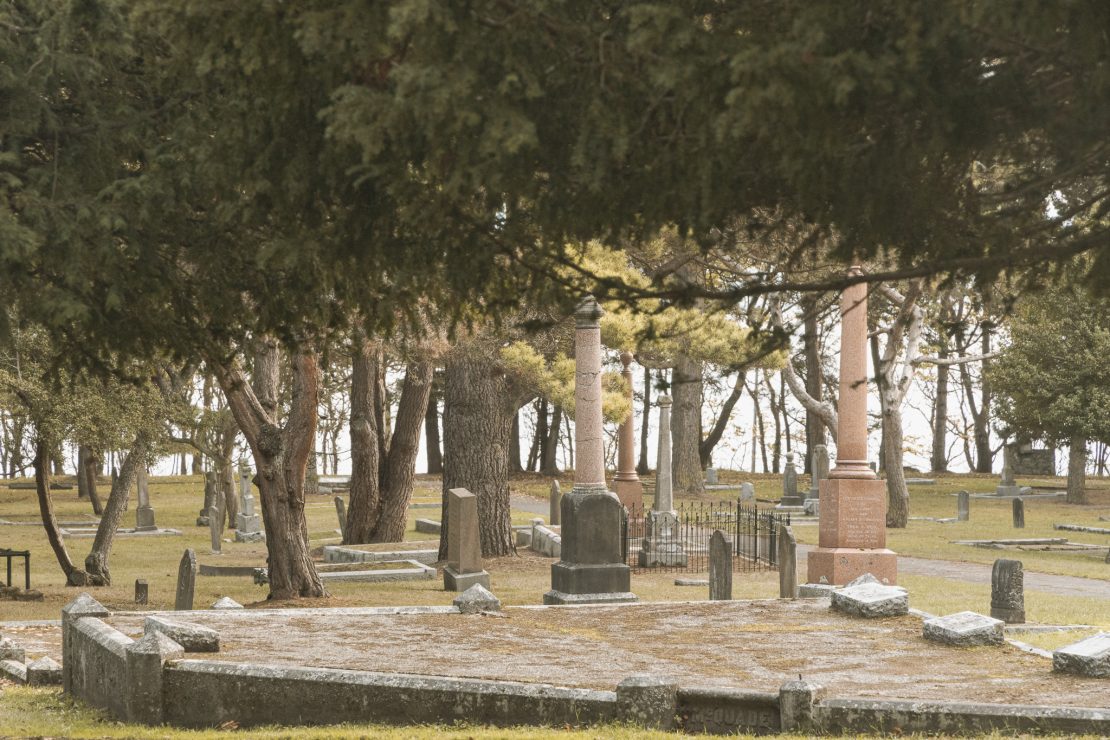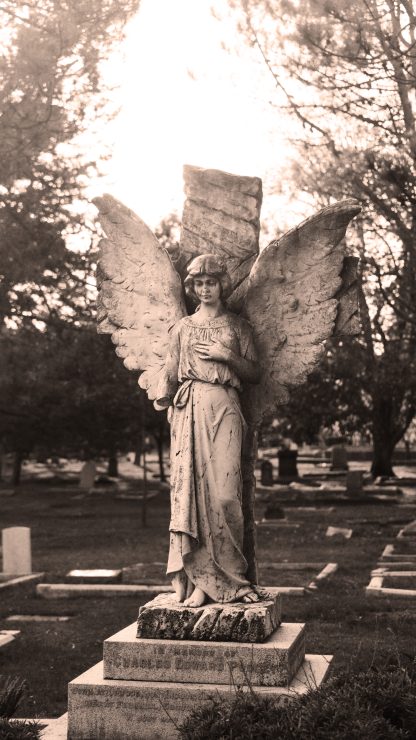Check out the resting spots of these fascinating women before the end of spooky season

Photo by Sohee Hong.
Halloween is right around the corner, and in a city as old as Victoria, there’s always something interesting to do. This time of year is the perfect opportunity to dig into Victoria’s history, and there’s no better way to do that than visiting the graves of those who shaped it.
If you’re a history buff, a feminist, someone who hates crowds, or anyone looking for a reason to go outside, then this listicle is for you.
The Photographer
Hannah Maynard, known as one of the most talented photographers of her time, was born in England in 1834. She immigrated to Upper Canada (currently Southern Ontario) in her youth, and moved to Victoria in 1862 when her husband sought a fortune from the Fraser Canyon. Maynard opened a photography studio, Mrs. R. Maynard’s Photographic Gallery, where she captured thousands of photos of Victorians.
Maynard was not only a photographer of everyday portraits, but a skilled artist who pioneered various trick photography techniques. She made photo montages and specialized in multiple exposures, many of which feature herself and her grandson. Maynard was buried at Ross Bay following her death in 1918.
The Artist
Born in Victoria in 1871, Emily Carr is likely the most famous woman buried at Ross Bay. She grew up in a traditional English home and briefly studied art in San Francisco in her adolescence, after her parents’ deaths. Much of her art depicts totem poles and scenes from First Nations villages, as well as brightly-coloured landscapes. Carr’s art let people in high-class society see into the forests, villages, and lives of the Indigenous in a more human way than they might have before.
After travelling to Europe and all throughout British Columbia, Carr settled back in Victoria, where she enjoyed her garden and the company of her many pets. Unable to paint because of health issues, Carr turned to writing as her form of artistic expression in the late 1930s, publishing works such as her memoir Klee Wick in 1941. She died in 1945, likely due to complications from a heart attack years before.
The Pioneer
Isabella Mainville Ross is Ross Bay Cemetary’s namesake. She was born in 1808 to a French father working for the Hudson’s Bay Company and an Ojibwa mother. In the early 1840s, she moved to Victoria with her husband Charles Ross, who helped to design and build Fort Victoria.
Ross is known for being B.C.’s first registered female landowner, having owned 99 acres of waterfront farmland, including the present-day cemetery lands, which she bought after husband’s death.
Ross died in 1885. Her grave stood unmarked for decades until a commemorative sign was installed in the 1990s.

Photo by Sohee Hong.
The Prospector
Nellie Cashman was born in Ireland in 1845. She immigrated to the United States in the early 1860s with her mother and sister, first living in Boston and then in San Francisco, before settling in Victoria in 1873. Cashman’s adventurous spirit brought her to travel extensively, making her a well-known source of food and support in mining camps up and down the continent.
Cashman was known for her generosity, raising money to build the now-defunct St. Joseph’s Hospital in Victoria and donating money throughout her life. She collected funds through the Sisters of St. Ann, an order of nuns dedicated to charitable work that was founded in Quebec city and still exists today.
She earned the nickname of “Angel of the Cassiar” after nursing a group of miners back to health during an outbreak of scurvy at their camp in Cassiar. She travelled 77 days in winter to reach the group, determined to save them from their gruesome fate.
Cashman died in Victoria in 1925 after decades of philanthropy, entrepreneurship, and kind-heartedness.
The Painter
Sarah Lindley Crease was born in England in 1826 to a wealthy and well-connected family. With her husband and three daughters, Crease immigrated to Canada in 1860, where she settled in Victoria and began to explore her interest in art.
Crease was a talented painter, specializing in watercolour depictions of an early Victoria. Today, Crease’s paintings are considered to be pieces of historical reference due in part to their realism and detail. She also wrote extensively in journals, and a collection of her letters is kept at the B.C. Archives.
To make your way to Ross Bay, take the Seven bus from downtown or UVic. Visit the city of Victoria’s Ross Bay Cemetery Map, search for each grave, and use the map to find them while you walk. Be sure to soak in the smell of the leaves, and picture yourself in the mid-19th century strolling around Mrs. Mainville Ross’ picturesque, trailblazing slice of Victoria.








